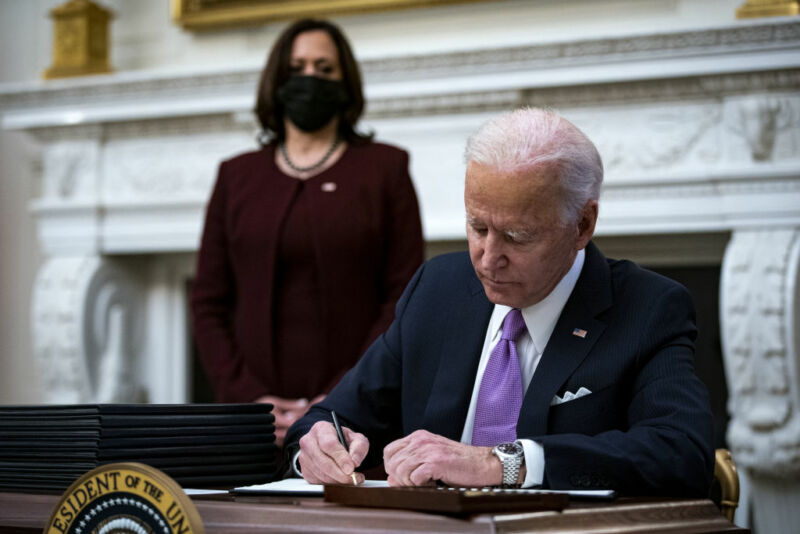A look at all of Biden’s changes to energy and environmental regulations

Enlarge / US President Joe Biden signs an executive order with US Vice President Kamala Harris, left, looking on. (credit: Bloomberg/Getty Images)
The series of executive orders signed by Joe Biden on his first evening in office included a heavy focus on environmental regulations. Some of the high-profile actions had been signaled in advance-we're back in the Paris Agreement! The Keystone pipeline's been put on indefinite hold!
But the suite of executive orders includes a long list that targets plenty of the changes Trump made in energy and environmental policies, many of which will have more subtle but significant effects of how the United States does business. Many of those make major changes, in some cases by eliminating policies adopted during the Trump years, a number of which we covered at the time. So, we've attempted to take a comprehensive look at Biden's actions and their potential impacts.
Laws, rules, and policiesEnvironmental and energy regulations are set through three main mechanisms. The first is by specific laws, which would require the cooperation of both houses of Congress to change. Next are also more general laws, like the Clean Air and Clean Water Acts. These enable regulations to be put in place via a formal rule-making process run by the agencies of the executive branch. This process involves soliciting public feedback, incorporating economic considerations, and so on, a process that typically takes anywhere from eight months to over a year. Finally, the executive branch can set policies to cover details not spelled out by the law or the rule, such as how to handle things like deadlines and enforcement details.
Read 18 remaining paragraphs | Comments